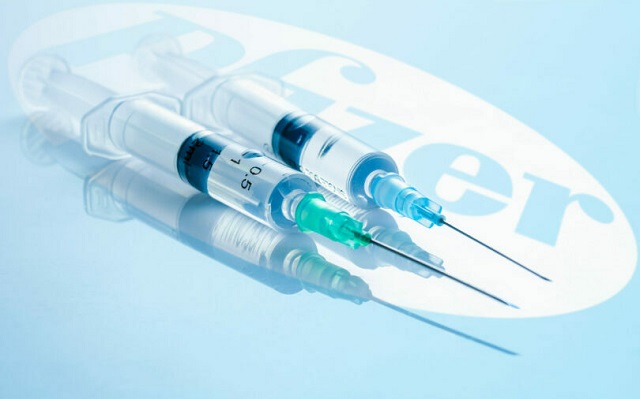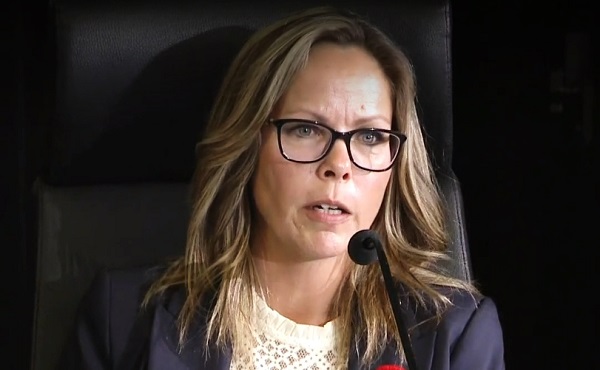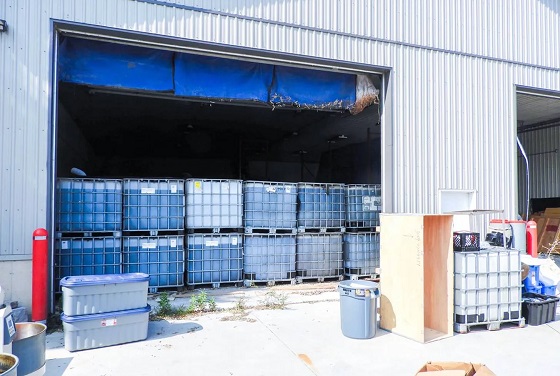COVID-19
Canada’s COVID vaccine contract with Pfizer emerges without cost per injection details

From LifeSiteNews
MPs are demanding the government disclose how much it spent on the vaccines
After being kept secret for over three years, certain details of the Canadian federal government’s COVID-19 vaccine contract with Pfizer for millions of doses of the experimental shots have been made public, albeit in heavily redacted form, and MPs are now demanding the government disclose just how much it spent on the jabs.
The federal government’s COVID jab contract was revealed by The Canadian Independent after it obtained the details through an access to information request. Although parts of the contract are heavily redacted, some give a clear insight that the Liberal federal government of Prime Minister Justin Trudeau knew there was no promise the shots would work and were 100 percent safe. It did also not disclose the total cost of the shots.
The “Manufacturing and Supply agreement between Pfizer and Minister of Public Works and Government Services Canada” dated October 26, 2020, is 59 pages and includes a section that says the shots would not be serialized. When a vaccine is serialized, it is given a unique number or other identification that can track its complete journey through the supply chain.
LifeSiteNews verified with Public Services and Procurement Canada’s media department that the contract released by The Canadian Independent is genuine.
“Public Services and Procurement Canada (PSPC) confirms this is a redacted copy of a contract between PSPC and Pfizer Canada ULC,” PSPC media relations representative Alexandre Baillairgé-Charbonneau wrote in an email to LifeSiteNews.
Fully redacted in the contract are sections 8 and 9, which likely relate to titled “indemnification” and “insurance and liability,” as was recently revealed by a leaked contract between Pfizer and South Africa.
Also mostly redacted is Section 3, which goes over “Price and Payment” terms.
Health Canada ordered 238 million COVID injections from Pfizer Canada, which includes some 30 million for 2023 and 2024. The total cost of just the Pfizer contract has not been revealed.
Asked about the contract with Pfizer Canada, the Department of Health declined to comment on the total cost, per Blacklock’s Reporter.
“When will the department divulge the costs per unit for the vaccine contracts?” New Democrat MP Matthew Green asked.
Public Works Minister Anita Anand has said that the “total cost” of the “envelope of funds for vaccines is about $8 billion,” but did not give a breakdown of how much the Pfizer deal was worth.
The Trudeau government also signed COVID-19 contracts with AstraZeneca, Johnson & Johnson, Medicago, Moderna, Novavax, and Sanofi. According to industry rates, the average price of a shot when sold to the United States was $19.50.
One Canadian company, Providence Therapeutics of Calgary, in 2021 told the House of Commons finance committee that the company had negotiated a price of $18 per dose with the Government of Manitoba.
Noted company CEO Brad Sorenson, “I’m not ashamed to say that Providence is making a fairly reasonable profit at that price.”
In a 2022 report, Canada’s Auditor General report said that the average price per shot was around $30 per dose.
Contract details were hidden from MPs
Najah Sampson, president of Pfizer Canada, had told the House of Commons public accounts committee in March that the contract was so secret that not even MPs could see it.
“Disclosure of our confidential agreement would be an extraordinary use of authority,” she testified.
Sampson claimed that having MPs request the contact information sent a “very concerning signal about how this country upholds its contractual obligations and could challenge its reputation as a reliable partner for future contracts across all business sectors.”
Patricia Gauthier, president and general manager of Moderna Canada, also told the same committee that the company’s contract with the Trudeau government was done on two “good faith principles” of transparency with officials and protection of its confidential information and intellectual property.
It was recently revealed that the Public Health Agency of Canada lost $150 million on an unfulfilled COVID jab contract with an undisclosed entity in 2022. In addition, $173 million given to Quebec-based Medicago Inc., which said it would be shutting down in 2023 due to a failed development of its own plant-based COVID shot, is now lost. Medicago is a subsidiary of Japan-based Mitsubishi Chemical Group.
As a result, Conservative Party of Canada (CPC) MPs have called for a parliamentary committee to investigate the severe losses related to COVID jab development to hold both Public Health and the federal government of Trudeau accountable.
The Trudeau government, with the help of the Department of Health, heavily promoted the COVID jabs, which were rushed to market. It is still promoting the shots, this time the recently approved booster.
In 2021, Trudeau said Canadians “vehemently opposed to vaccination” do “not believe in science,” are “often misogynists, often racists,” and questioned whether Canada should continue to “tolerate these people.”
A recent study done by researchers at the Canada-based Correlation Research in the Public Interest found that 17 countries have a “definite causal link” between peaks in all-cause mortality and the fast rollouts of the COVID shots and boosters.
LifeSiteNews reported last month how the Polyomavirus Simian Virus 40 (SV40), which is a monkey-linked DNA sequence known to cause cancer when it was used in old polio vaccines, has been confirmed by Health Canada to be in the Pfizer COVID shot, a fact that was not disclosed by the vaccine maker to officials.
Last week, LifeSiteNews reported on how officials with Canada’s Department of Health have refused to release data concerning internal audits related to the COVID crisis that show “critical weaknesses and gaps” according to their own department memo.
COVID-19
Canadian veteran challenges conviction for guarding War Memorial during Freedom Convoy

From LifeSiteNews
When the convoy first came to Ottawa, allegations were floated that the memorial had been desecrated. After learning of this, Evely quickly organized a group of veterans to stand guard around the clock to protect the area.
A Canadian veteran appealed to the Ontario courts after he was convicted for organizing a guard around the National War Memorial during the Freedom Convoy.
In an October press release, the Justice Centre for Constitutional Freedoms (JCCF) announced that an appeal has been filed in the Ontario Court of Appeals on behalf of Master Warrant Officer (Ret’d) Jeffrey Evely over his conviction for mischief and obstructing police while on his way to guard the Ottawa War Memorial during the 2022 Freedom Convoy.
“By locking down large sections of downtown Ottawa, the police were effectively preventing all civilians from accessing public areas and greatly exceeded their powers under the common law,” constitutional lawyer Chris Fleury explained.
“This case raises issues that have implications for protests across the province and the country. We are hopeful that the Ontario Court of Appeal will agree and grant leave to appeal,” he added.
The appeal argues that police overstepped their authority in their response to the 2022 protest of COVID mandates. Police actions at the time included locking down the Ottawa core, establishing checkpoints, and arresting protesters.
In September 2024, Everly was convicted of mischief and obstruction after his involvement in the 2022 Freedom Convoy, which protested COVID mandates by gathering Canadians in front of Parliament in Ottawa.
As LifeSiteNews previously reported, when the convoy first came to Ottawa, allegations were floated that the memorial had been desecrated. After learning of this, Evely quickly organized a group of veterans to stand guard around the clock to protect the area.
However, under former Prime Minister Justin Trudeau’s use of the Emergencies Act, many parts of downtown Ottawa were blocked to the public, and a vigilant police force roamed the streets.
It was during this time that Evely was arrested for entering a closed off section of downtown Ottawa during the early hours of February 19, 2022. He had been on his way to take the 4:25 a.m. shift protecting the Ottawa War Memorial.
As Evely walked to the memorial, he was allegedly told to stop by police. According to the police, Evely “ran for a short distance before being confronted by two additional police officers.”
He was forcibly pushed to the ground, landing face first. The veteran was then arrested and charged with mischief and obstructing police.
At the time, the use of the EA was justified by claims that the protest was “violent,” a claim that has still gone unsubstantiated.
In fact, videos of the protest against COVID regulations and shot mandates show Canadians from across the country gathering outside Parliament engaged in dancing, street hockey, and other family-friendly activities.
Indeed, the only acts of violence caught on video were carried out against the protesters after the Trudeau government directed police to end the protest. One such video showed an elderly women being trampled by a police horse.
While the officers’ actions were originally sanctioned under the EA, Federal Court Justice Richard Mosley ruled that Trudeau was “not justified” in invoking the EA, forcing Crown prosecutors to adopt a different strategy.
Now, Crown prosecutors allege that the common law granted police the authority to stop and detain Evely, regardless of the EA.
However, Evely and his lawyers have challenged this argument under section 9 of the Canadian Charter of Rights and Freedoms, insisting that his “arrest and detention were arbitrary.”
Earlier this month, Freedom Convoy organizers Tamara Lich and Chris Barber were sentenced to 18-month house arrest after a harrowing 25-month trial process. Many have condemned the sentence, warning it amounts to “political persecution” of those who stand up to the Liberal government.
COVID-19
Freedom Convoy leader Tamara Lich says ‘I am not to leave the house’ while serving sentence

From LifeSiteNews
‘I was hoping to be able to drop off and pick up my grandsons from school, but apparently that request will have to go to a judge’
Freedom Convoy leader Tamara Lich detailed her restrictive house arrest conditions, revealing she is “not” able to leave her house or even pick up her grandkids from school without permission from the state.
Lich wrote in a X post on Wednesday that this past Tuesday was her first meeting with her probation officer, whom she described as “fair and efficient,” adding that she was handed the conditions set out by the judge.
“I was hoping to be able to drop off and pick up my grandsons from school, but apparently that request will have to go to a judge under a variation application, so we’ll just leave everything as is for now,” she wrote.
Lich noted that she has another interview with her probation officer next week to “assess the level of risk I pose to re-offend.”
“It sounds like it’ll basically be a questionnaire to assess my mental state and any dangers I may pose to society,” she said.
While it is common for those on house arrest to have to ask for permission to leave their house, sometimes arrangements can be made otherwise.
On October 7, Ontario Court Justice Heather Perkins-McVey sentenced Lich and Chris Barber to 18 months’ house arrest after being convicted earlier in the year convicted of “mischief.”
Lich was given 18 months less time already spent in custody, amounting to 15 1/2 months.
As reported by LifeSiteNews, the Canadian government was hoping to put Lich in jail for no less than seven years and Barber for eight years for their roles in the 2022 protests against COVID mandates.
Interestingly, Perkins-McVey said about Lich and Barber during the sentencing, “They came with the noblest of intent and did not advocate for violence.”
Lich said that her probation officer “informed me of the consequences should I breach these conditions, and I am not to leave the house, even for the approved ‘necessities of life’ without contacting her to let her know where I’ll be and for how long,” she wrote.
“She will then provide a letter stating I have been granted permission to be out in society. I’m to have my papers on my person at all times and ready to produce should I be pulled over or seen by law enforcement out and about.”
Lich said that the probation officer did print a letter “before I left, so I could stop at the optometrist and dentist offices on my way home.”
She said that her official release date is January 21, 2027, which she said amounts to “1,799 days after my initial arrest.”
As reported by LifeSiteNews, Lich, reflecting on her recent house arrest verdict, said she has no “remorse” and will not “apologize” for leading a movement that demanded an end to all COVID mandates.
LifeSiteNews reported that Conservative Party leader Pierre Poilievre offered his thoughts on the sentencing, wishing them a “peaceful” life while stopping short of blasting the sentence as his fellow MPs did.
In early 2022, the Freedom Convoy saw thousands of Canadians from coast to coast come to Ottawa to demand an end to COVID mandates in all forms. Despite the peaceful nature of the protest, Trudeau’s government enacted the never-before-used Emergencies Act (EA) on February 14, 2022.
-

 National21 hours ago
National21 hours agoCanadian MPs order ethics investigation into Mark Carney’s corporate interests
-

 Business2 days ago
Business2 days agoCanada has given $109 million to Communist China for ‘sustainable development’ since 2015
-

 Banks1 day ago
Banks1 day agoBank of Canada Cuts Rates to 2.25%, Warns of Structural Economic Damage
-

 Business1 day ago
Business1 day agoFord’s Liquor War Trades Economic Freedom For Political Theatre
-

 Opinion2 days ago
Opinion2 days agoBritish Columbians protest Trump while Eby brings their province to its knees
-

 International2 days ago
International2 days agoStrongest hurricane in 174 years makes landfall in Jamaica
-

 Bruce Dowbiggin8 hours ago
Bruce Dowbiggin8 hours agoGet Ready: Your House May Not Be Yours Much Longer
-

 Alberta16 hours ago
Alberta16 hours agoNobel Prize nods to Alberta innovation in carbon capture




